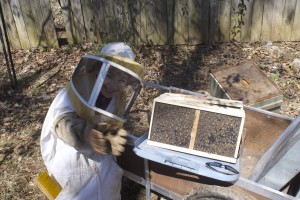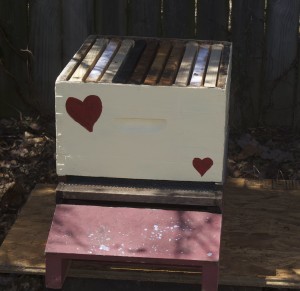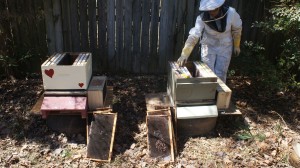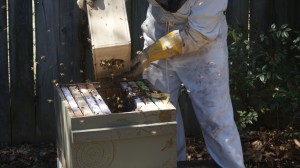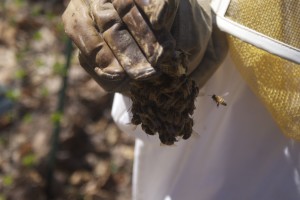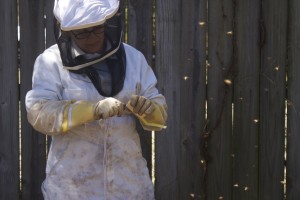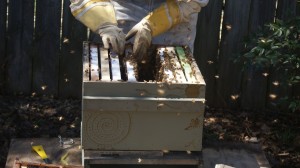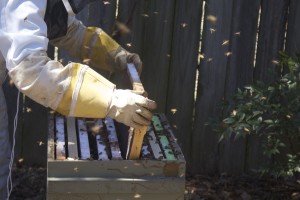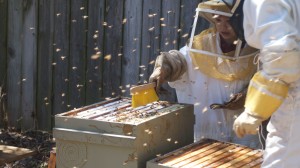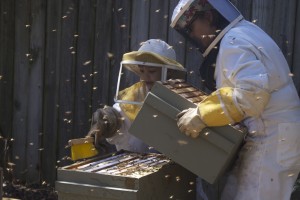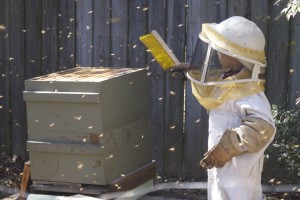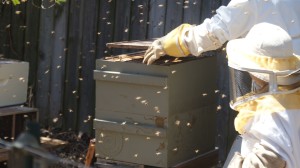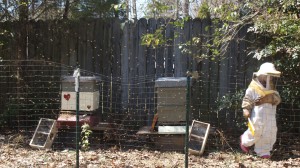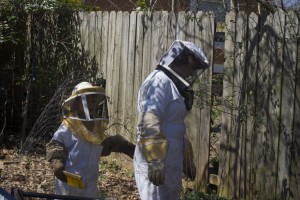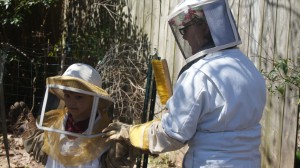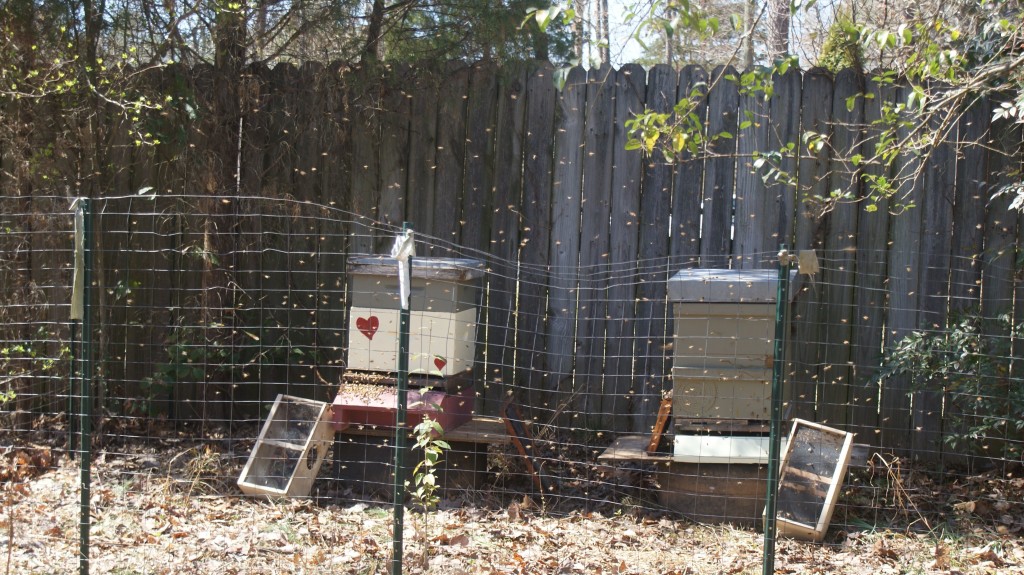Today Grateful Trees and Bees hived two new queens with the assistance of our youngest beekeeper. For our clients who will soon be starting hives of your own, here’s a sneak peak photo journey into the process. For more pictures, Like us on Facebook.
The wooden and mesh box is a 3lb. package of bees. The package comes with food for the bees’ travel and the queen is separated out in her own cell. 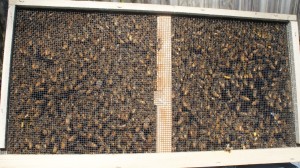
While bees tend to be quite docile when being hived, we recommend suiting up. They are thrilled to be free ofthe package, will be flying all over orienting themselves to their new surroundings, and you will be working with them very closely. A suit will allow you to feel more comfortable during the hiving process.
To start, set up your hive on a foundation to raise it from the ground. We use what we have on hand, which means plywood on an old race car tire! We are facing our hives Southeast and giving them a bit of shade and protection from some nearby trees and a wooden fence. The hive below includes a landing platform, a bottom board and a brood chamber.
Remove a few of the frames from the brood chamber so you can dump in the bees.
Take the food source off of the package, thus opening a hole in it. Remove the queen cell and set it aside. Then, literally, dump out the bees! Leave the package next to the hive so lingering bees can exit.
Here’s the queen cell . . . protected by a swarm of bees.
“Pop the top” off the queen cell.
And place the cell in the hive between two frames.
The queen is “trapped” in the cell with a sort of “candy.” The bees will eat through it to free her once she’s in the hive.
Replace all but one of the frames, leaving one out to make room for the queen cell.
Gently brush the bees off the edges of the brood chamber.
And add a honey super. Our super is full of capped honey to feed the bees until they can start producing their own. If you don’t have any honey on hand, you can feed your bees sugar water to start them off.
Again, brush the bees off the edge of the honey super.
And add a top board, also called an inner cover.
Then an outer cover, or what we call the hive’s roof.
Then, get out of Dodge and let the bees settle into their new home.
One last job, when you’re working with another beekeeper . . .
It’s customary to check them for any hitchhiker bees and to help gently brush them off.
The bees are catching the sunlight as they fly in figure eights to orient themselves. It’s an absolute joy to hear their vibratory buzzing around these parts again.
© 2014 Grateful Trees & Bees

